Game Suggestions Topic
Moderator: Kenya
-
Hope
- Adult Mouse
- Posts: 966
- Joined: Mon Aug 15, 2011 9:59 am
- Location: Shadowclan Territory, plotting of ruling the forest!
Rabbit Speed and another Comment
Umm, I really think the rabbit should be faster and like many people have asked.... we need to be able to dig larger dens! Maybe even make a group/colony?
Epic 24/7 Minecraft Server sc27.servercraft.co:8076
Minecraft Status: Single... XD Just Joking I'm Online
Minecraft Status: Single... XD Just Joking I'm Online
- Alexander
- Adult Rabbit
- Posts: 3898
- Joined: Thu Jul 15, 2010 8:37 pm
- Location: Srsly.
Re: Suggestions Topic
I felt that this was a suggestion-sort of thing and can be discussed here. (:
By faster you mean by moving across the map at a faster rate, right? If so, I wouldn't really mind that, then again, I've never accomplished much as a rabbit, so I wouldn't know how fast/slow they'd be as a full adult.
I just know that as a baby and growing you will become faster. The fox is a great example of that.
I would like to see some sort of colony/group of bunnies with a large, tunnel-filled dens. Would be fun to get to know the place and to fend off snakes and stuff, defending your colony and what-not.
By faster you mean by moving across the map at a faster rate, right? If so, I wouldn't really mind that, then again, I've never accomplished much as a rabbit, so I wouldn't know how fast/slow they'd be as a full adult.
I just know that as a baby and growing you will become faster. The fox is a great example of that.
I would like to see some sort of colony/group of bunnies with a large, tunnel-filled dens. Would be fun to get to know the place and to fend off snakes and stuff, defending your colony and what-not.
-
Alias
- Baby Mouse
- Posts: 459
- Joined: Mon Sep 12, 2011 8:52 am
- Location: Behind you
Re: Rabbit Speed and another Comment
Nice idea there. They live in warrens or burrows, I don't know what a group of rabbits is called, but they do live together ;] And yes, rabbits are pretty fast. But I'm not quite sure how that would work. What about being able to dodge when a predator attacks? That would also make them pretty fast and there's less chance of dying. I remember playing as a rabbit, but I'm always dead before I'm 1/4 years old on the age clock.SillyBear111 wrote:Umm, I really think the rabbit should be faster and like many people have asked.... we need to be able to dig larger dens! Maybe even make a group/colony?
"Parents spend the first part of our lives teaching us to walk and talk, and the rest of it telling us to sit down and shut up."
Game Name: Guardian
-
Hope
- Adult Mouse
- Posts: 966
- Joined: Mon Aug 15, 2011 9:59 am
- Location: Shadowclan Territory, plotting of ruling the forest!
Re: Suggestions Topic
Oh, may I make another suggestion?
Shouldn't NPC's be able to mate with you and build a nest? Cause they help add materials once you mate and they clean you and other stuff. I just thought it would be more realistic if they could mate and do more actions.
Shouldn't NPC's be able to mate with you and build a nest? Cause they help add materials once you mate and they clean you and other stuff. I just thought it would be more realistic if they could mate and do more actions.
Epic 24/7 Minecraft Server sc27.servercraft.co:8076
Minecraft Status: Single... XD Just Joking I'm Online
Minecraft Status: Single... XD Just Joking I'm Online
- SilentEcho
- Hawk Chick
- Posts: 4081
- Joined: Thu Mar 25, 2010 2:48 am
- Location: Australia
- Contact:
Re: Suggestions Topic
Condors and foxes are too easy to play as. So, I was thinking.
If an animal happens to kill something, it will guard the carcass for a while (unless it's a parent).
That way you have to wait for the carcass to be left unguarded before you can feed and the game won't be too easy.
Does that make sense?
If an animal happens to kill something, it will guard the carcass for a while (unless it's a parent).
That way you have to wait for the carcass to be left unguarded before you can feed and the game won't be too easy.
Does that make sense?
-
Alias
- Baby Mouse
- Posts: 459
- Joined: Mon Sep 12, 2011 8:52 am
- Location: Behind you
Re: Suggestions Topic
I should like more hunting options/ideas. Perhaps there could be a 'sneak' option for the predator, where on the screen perhaps you could fade out a bit so there's less chance of prey seeing you. Or a 'hide' option for the prey if there's another object in the same box eg: Bush, log, tree.
And I agree with the scent trail idea, definitely. There absolutely MUST be animals tracks and scent trails, what's the point of having a nose if you can't use it? ;]
Also for the mate thing, yes I agree, the NPCs should get up and do some impressing. They don't help with the nesting or anything, and sit there like an ragdoll. The ideas are coming on magnificently, but I'm rather impatient for the updates ;]
And I agree with the scent trail idea, definitely. There absolutely MUST be animals tracks and scent trails, what's the point of having a nose if you can't use it? ;]
Also for the mate thing, yes I agree, the NPCs should get up and do some impressing. They don't help with the nesting or anything, and sit there like an ragdoll. The ideas are coming on magnificently, but I'm rather impatient for the updates ;]
"Parents spend the first part of our lives teaching us to walk and talk, and the rest of it telling us to sit down and shut up."
Game Name: Guardian
-
animalguy888
- Adult Gecko
- Posts: 1546
- Joined: Thu Apr 07, 2011 10:42 am
- Location: In the sky hunting for a hybrid between superman and bigfoot in an alternate universe
- Contact:
Re: Suggestions Topic
I got some more animal suggestions... I still do not think WEO's north america is as realisticly diverse as it should be.
my ideas
Turkey vulture
If you’ve gone looking for raptors on a clear day, your heart has probably leaped at the sight of a large, soaring bird in the distance– perhaps an eagle or osprey. But if it's soaring with its wings raised in a V and making wobbly circles, it's likely a Turkey Vulture. These birds ride thermals in the sky and use their keen sense of smell to find fresh carcasses. They are a consummate scavenger, cleaning up the countryside one bite of their sharply hooked bill at a time, and never mussing a feather on their bald heads.
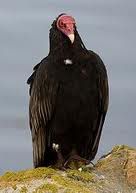
yellow headed blackbird
Its brilliant yellow head, together with its loud, rusty-hinge call, make the Yellow-headed Blackbird a conspicuous presence in western wetlands. It breeds in loose colonies and places its nest over water, attached to cattails and reeds.
Food
Aquatic insects, grain, and weed seeds.
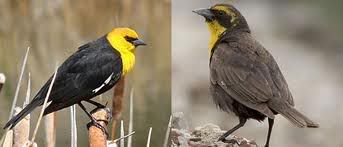
aquatic insects
An added peice to the insects we have now. It Would work well with the yellow headed blackbird.
lazuli bunting
similer to the eastern bluebird.
A beautifully colored bird, the Lazuli Bunting is common in shrubby areas throughout the American West
habitat
Open Woodland
Bushy hillsides, riparian habitats, wooded valleys, sagebrush, chaparral, open scrub, recent post-fire habitats, thickets and hedges along agricultural fields, and residential gardens.
Nest Description
Open cup of coarse grasses, rootlets, strips of bark, and leaves, lined with fine grass, rootlets, and animal hairs. Wrapped in silk. Placed in shrub, close to ground.
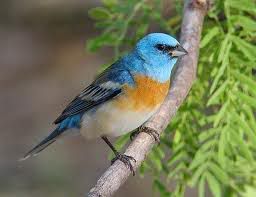
American Kestrel
A smaller and more colorfull version of the current redtail hawk with a slightly different diet.
North America’s littlest falcon, the American Kestrel packs a predator’s fierce intensity into its small body. It's one of the most colorful of all raptors: the male’s slate-blue head and wings contrast elegantly with his rusty-red back and tail; the female has the same warm reddish on her wings, back, and tail. Hunting for insects and other small prey in open territory, kestrels perch on wires or poles, or hover facing into the wind, flapping and adjusting their long tails to stay in place. Kestrels are declining in parts of their range.
American Kestrels eat mostly insects and other invertebrates, as well as small rodents and birds. Common foods include grasshoppers, cicadas, beetles, and dragonflies; scorpions and spiders; butterflies and moths; voles, mice, shrews, bats, and small songbirds. American Kestrels also sometimes eat small snakes, lizards, and frogs. And some people have reported seeing American Kestrels take larger prey, including red squirrels and Northern Flickers.
American Kestrels do not use nesting materials. If the cavity floor is composed of loose material, the female hollows out a shallow depression there.
American Kestrels nest in cavities, although they lack the ability to excavate their own. They rely on old woodpecker holes, natural tree hollows, rock crevices, and nooks in buildings and other human-built structures. The male searches for possible nest cavities. When he’s found suitable candidates, he shows them to the female, who makes the final choice. Typically, nest sites are in trees along wood edges or in the middle of open ground.
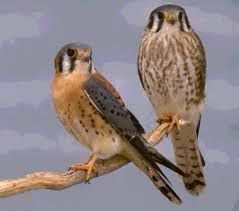
Great blue herons
The familiar Great Blue Heron is the largest heron in North America. It is a large bird, with a slate-gray body, chestnut and black accents, and very long legs and neck. In flight, it looks enormous, with a six-foot wingspan. Adults sport a shaggy ruff at the base of their necks. A black eyebrow extends back to black plumes emerging from the head. Juveniles have a dark crown with no plumes or ruff, and a mottled neck. In flight, a Great Blue Heron typically holds its head in toward its body with its neck bent.
Habitat
Adaptable and widespread, the Great Blue Heron is found in a wide variety of habitats. When feeding, it is usually seen in slow-moving or calm salt, fresh, or brackish water. Great Blue Herons inhabit sheltered, shallow bays and inlets, sloughs, marshes, wet meadows, shores of lakes, and rivers. Nesting colonies are typically found in mature forests, on islands, or near mudflats, and do best when they are free of human disturbance and have foraging areas close by.
Diet
The variable diet of Great Blue Herons allows them to exploit a variety of habitats. This adaptability also enables them to winter farther north than most herons. Fish, amphibians, reptiles, invertebrates, small mammals, and even other birds are all potential prey of the Great Blue Heron. In Washington, much of their winter hunting is on land, with voles making up a major portion of their winter diet.
Nesting
Great Blue Herons usually breed in colonies containing a few to several hundred pairs. Isolated pair-breeding is rare. Nest building begins in February when a male chooses a nesting territory and displays to attract a female. The nest is usually situated high up in a tree. The male gathers sticks for the female who fashions them into a platform nest lined with small twigs, bark strips, and conifer needles. Both parents incubate the 3-5 eggs for 25-29 days. Both parents regurgitate food for the young. The young can first fly at about 60 days old, although they continue to return to the nest and are fed by the adults for another few weeks. Pair bonds only last for the nesting season, and adults form new bonds each year.
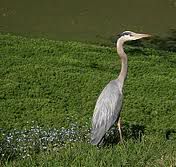
thats all my suggustions for now...
my ideas
Turkey vulture
If you’ve gone looking for raptors on a clear day, your heart has probably leaped at the sight of a large, soaring bird in the distance– perhaps an eagle or osprey. But if it's soaring with its wings raised in a V and making wobbly circles, it's likely a Turkey Vulture. These birds ride thermals in the sky and use their keen sense of smell to find fresh carcasses. They are a consummate scavenger, cleaning up the countryside one bite of their sharply hooked bill at a time, and never mussing a feather on their bald heads.

yellow headed blackbird
Its brilliant yellow head, together with its loud, rusty-hinge call, make the Yellow-headed Blackbird a conspicuous presence in western wetlands. It breeds in loose colonies and places its nest over water, attached to cattails and reeds.
Food
Aquatic insects, grain, and weed seeds.

aquatic insects
An added peice to the insects we have now. It Would work well with the yellow headed blackbird.
lazuli bunting
similer to the eastern bluebird.
A beautifully colored bird, the Lazuli Bunting is common in shrubby areas throughout the American West
habitat
Open Woodland
Bushy hillsides, riparian habitats, wooded valleys, sagebrush, chaparral, open scrub, recent post-fire habitats, thickets and hedges along agricultural fields, and residential gardens.
Nest Description
Open cup of coarse grasses, rootlets, strips of bark, and leaves, lined with fine grass, rootlets, and animal hairs. Wrapped in silk. Placed in shrub, close to ground.

American Kestrel
A smaller and more colorfull version of the current redtail hawk with a slightly different diet.
North America’s littlest falcon, the American Kestrel packs a predator’s fierce intensity into its small body. It's one of the most colorful of all raptors: the male’s slate-blue head and wings contrast elegantly with his rusty-red back and tail; the female has the same warm reddish on her wings, back, and tail. Hunting for insects and other small prey in open territory, kestrels perch on wires or poles, or hover facing into the wind, flapping and adjusting their long tails to stay in place. Kestrels are declining in parts of their range.
American Kestrels eat mostly insects and other invertebrates, as well as small rodents and birds. Common foods include grasshoppers, cicadas, beetles, and dragonflies; scorpions and spiders; butterflies and moths; voles, mice, shrews, bats, and small songbirds. American Kestrels also sometimes eat small snakes, lizards, and frogs. And some people have reported seeing American Kestrels take larger prey, including red squirrels and Northern Flickers.
American Kestrels do not use nesting materials. If the cavity floor is composed of loose material, the female hollows out a shallow depression there.
American Kestrels nest in cavities, although they lack the ability to excavate their own. They rely on old woodpecker holes, natural tree hollows, rock crevices, and nooks in buildings and other human-built structures. The male searches for possible nest cavities. When he’s found suitable candidates, he shows them to the female, who makes the final choice. Typically, nest sites are in trees along wood edges or in the middle of open ground.

Great blue herons
The familiar Great Blue Heron is the largest heron in North America. It is a large bird, with a slate-gray body, chestnut and black accents, and very long legs and neck. In flight, it looks enormous, with a six-foot wingspan. Adults sport a shaggy ruff at the base of their necks. A black eyebrow extends back to black plumes emerging from the head. Juveniles have a dark crown with no plumes or ruff, and a mottled neck. In flight, a Great Blue Heron typically holds its head in toward its body with its neck bent.
Habitat
Adaptable and widespread, the Great Blue Heron is found in a wide variety of habitats. When feeding, it is usually seen in slow-moving or calm salt, fresh, or brackish water. Great Blue Herons inhabit sheltered, shallow bays and inlets, sloughs, marshes, wet meadows, shores of lakes, and rivers. Nesting colonies are typically found in mature forests, on islands, or near mudflats, and do best when they are free of human disturbance and have foraging areas close by.
Diet
The variable diet of Great Blue Herons allows them to exploit a variety of habitats. This adaptability also enables them to winter farther north than most herons. Fish, amphibians, reptiles, invertebrates, small mammals, and even other birds are all potential prey of the Great Blue Heron. In Washington, much of their winter hunting is on land, with voles making up a major portion of their winter diet.
Nesting
Great Blue Herons usually breed in colonies containing a few to several hundred pairs. Isolated pair-breeding is rare. Nest building begins in February when a male chooses a nesting territory and displays to attract a female. The nest is usually situated high up in a tree. The male gathers sticks for the female who fashions them into a platform nest lined with small twigs, bark strips, and conifer needles. Both parents incubate the 3-5 eggs for 25-29 days. Both parents regurgitate food for the young. The young can first fly at about 60 days old, although they continue to return to the nest and are fed by the adults for another few weeks. Pair bonds only last for the nesting season, and adults form new bonds each year.

thats all my suggustions for now...

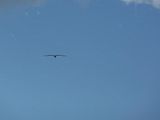

"There is beauty in every Creature, Stone, and Plant. To find it you Just have to look for It."
Click here if you dare!...

- Døøm Dragøn
- Adult Fox
- Posts: 8615
- Joined: Mon Jul 20, 2009 11:21 pm
- Location: Somewhere I shouldn't be.
- Contact:
Re: Rabbit Speed and another Comment
Yes, the mice and geckos as well. In the rare moments that I do play WEO I'm surprised on how well I tolerated the slow movement. I have also heard from many people that the main reason they left WEO is due to the fact the animals moved to slow. Since rabbits,mice, and geckos are usually known to be fast critters I don't see why not.SillyBear111 wrote:Umm, I really think the rabbit should be faster and like many people have asked.... we need to be able to dig larger dens! Maybe even make a group/colony?
Also, I would love the option to expand holes and perhaps dens and caves. Maybe this could become an advanced player only option as it may help draw more people to the game.
-
Alias
- Baby Mouse
- Posts: 459
- Joined: Mon Sep 12, 2011 8:52 am
- Location: Behind you
Re: Suggestions Topic
Someone might have mentioned this before, but there must be a way to get rid of holes. Can't you bury them? Or collect gravel and mud and stuff them inside? 'Cause I went on World 1 the other day, and you can't walk two feet without passing a hole. Specifically just under the forest. Or holes could have an age limit before they could collapse, or disappear...
Also, why shouldn't we design our own holes? Small mammals, specifically mice, could dig an underground network of tunnels. Isn't that what they do? And all the animals could design their own hole, perhaps with a limited number of boxes you can dig through. So instead of the usual swirly-whirly-left-and-right hole for a gecko, it could go in a circle, a straight line or a triangle...
I've been thinking about this for a while, and I think it's a nice idea ;]
Also, why shouldn't we design our own holes? Small mammals, specifically mice, could dig an underground network of tunnels. Isn't that what they do? And all the animals could design their own hole, perhaps with a limited number of boxes you can dig through. So instead of the usual swirly-whirly-left-and-right hole for a gecko, it could go in a circle, a straight line or a triangle...
I've been thinking about this for a while, and I think it's a nice idea ;]
"Parents spend the first part of our lives teaching us to walk and talk, and the rest of it telling us to sit down and shut up."
Game Name: Guardian
-
Desinee
- Baby Gecko
- Posts: 1041
- Joined: Tue Aug 17, 2010 1:57 pm
- Location: Lost away and thoughts
- Contact:
Re: Suggestions Topic
I think that we should have SandHill Cranes(Florida).They live were I am from and are just so big and curious.They live in flocks with their mates and babys and eat bugs and fish(from what I have seen).They do fly and let people around them thought.Once I was playing with one and he came right up to me and was examining my fingers.I would just love to act one of them.

Sorry it is so big D:

Sorry it is so big D:
-
maybellmay
- Bluebird Chick
- Posts: 9
- Joined: Mon Aug 08, 2011 1:47 pm
Re: Suggestions Topic
This isn't a animal suggestion, but, still I want to suggest this.
When a real player goes to pick up another real player, instead of it coming up as a attack, maybe it could come up in a pop-up saying "_____ requests to pick you up." (then a yes or no option)
and since people will object to this suggestion, make it a world-1-only thing perhaps c:
just a suggestion.
When a real player goes to pick up another real player, instead of it coming up as a attack, maybe it could come up in a pop-up saying "_____ requests to pick you up." (then a yes or no option)
and since people will object to this suggestion, make it a world-1-only thing perhaps c:
just a suggestion.
-
Leopard7878
- Bluebird Chick
- Posts: 14
- Joined: Tue Oct 25, 2011 2:19 am
- Location: Looking for flowers in a beautiful meadow
Re: Suggestions Topic
if weo could afford an african world could meerkats be a basic animal??? 

i love meerkats, and they could be like a “0” point animal, like the bluebird its like a starter for the african world.
i love meerkats, and they could be like a “0” point animal, like the bluebird its like a starter for the african world.
Love will never fail no matter what
- number 1 fan
- Bluebird Chick
- Posts: 18
- Joined: Fri Oct 28, 2011 12:42 am
Re: Suggestions Topic
i like meerkats too. i hope webearthonline will have those soon.Leopard7878 wrote:if weo could afford an african world could meerkats be a basic animal???
i love meerkats, and they could be like a “0” point animal, like the bluebird its like a starter for the african world.
if your reading this then... im your number one fan
avatar (c) to me, (i made it)
avatar (c) to me, (i made it)
-
Alias
- Baby Mouse
- Posts: 459
- Joined: Mon Sep 12, 2011 8:52 am
- Location: Behind you
Re: Suggestions Topic
Why don't we have something new on the profile? Instead of simply having Occupation, Location, Interests etc we can have another box where we add our on things. I've been thinking of a RP character for some time now and I've no where to post it.
"Parents spend the first part of our lives teaching us to walk and talk, and the rest of it telling us to sit down and shut up."
Game Name: Guardian
-
Shadow Wolf
- Bluebird Chick
- Posts: 59
- Joined: Mon Oct 24, 2011 11:16 am
- Location: playing weo at my cp at home
- Contact:
Re: Suggestions Topic
look,dont u find it annoying when u come across a npc and it has a real players name so they attack u and u think its a real person!?
can we PLEASE get rid of the abbility to name your offspring?!
can we PLEASE get rid of the abbility to name your offspring?!










